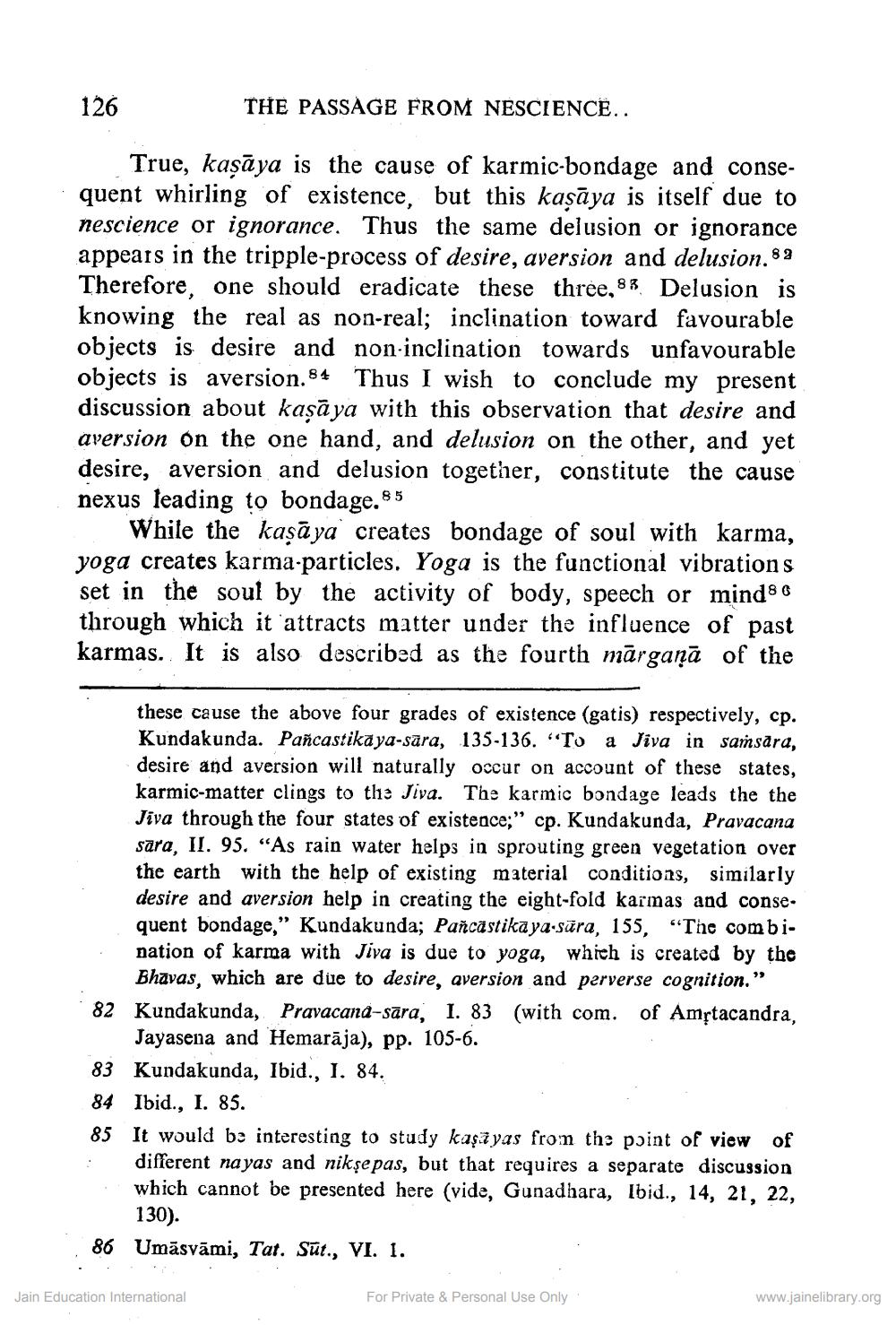________________
THE PASSAGE FROM NESCIENCE..
True, kaṣaya is the cause of karmic-bondage and consequent whirling of existence, but this kaṣāya is itself due to nescience or ignorance. Thus the same delusion or ignorance appears in the tripple-process of desire, aversion and delusion. 82 Therefore, one should eradicate these three, 83 Delusion is knowing the real as non-real; inclination toward favourable objects is desire and non-inclination towards unfavourable objects is aversion. 84 Thus I wish to conclude my present discussion about kaşaya with this observation that desire and aversion on the one hand, and delusion on the other, and yet desire, aversion and delusion together, constitute the cause nexus leading to bondage.85
126
While the kaşaya creates bondage of soul with karma, yoga creates karma-particles. Yoga is the functional vibration s set in the soul by the activity of body, speech or minds 6 through which it attracts matter under the influence of past karmas. It is also described as the fourth margana of the
these cause the above four grades of existence (gatis) respectively, cp. Kundakunda. Pañcastikaya-sara, 135-136. "To a Jiva in samsara, desire and aversion will naturally occur on account of these states, karmic-matter clings to the Jiva. The karmic bondage leads the the Jiva through the four states of existence;" cp. Kundakunda, Pravacana sara, II. 95. "As rain water helps in sprouting green vegetation over the earth with the help of existing material conditions, similarly desire and aversion help in creating the eight-fold karmas and consequent bondage," Kundakunda; Pañcastikaya-sāra, 155, "The combination of karma with Jiva is due to yoga, which is created by the Bhavas, which are due to desire, aversion and perverse cognition."
82 Kundakunda, Pravacand-sara, I. 83 (with com. of Amṛtacandra, Jayasena and Hemarāja), pp. 105-6.
83 Kundakunda, Ibid., I. 84.
84 Ibid., I. 85.
85 It would be interesting to study kaşayas from the point of view of different nayas and niksepas, but that requires a separate discussion which cannot be presented here (vide, Gunadhara, Ibid., 14, 21, 22, 130).
86 Umāsvāmi, Tat. Süt., VI. 1.
Jain Education International
For Private & Personal Use Only
www.jainelibrary.org




